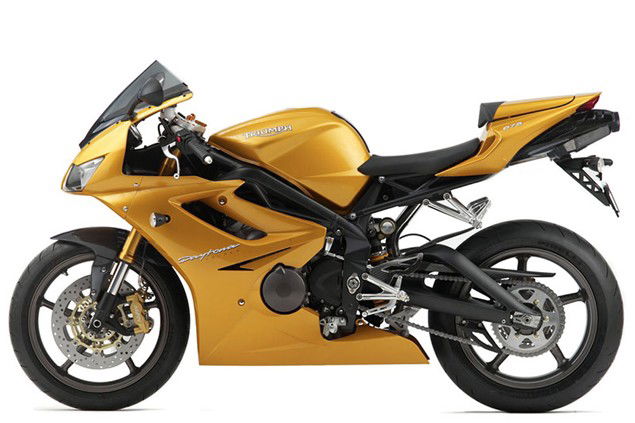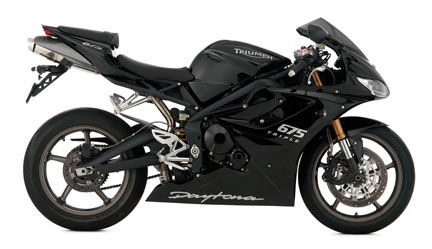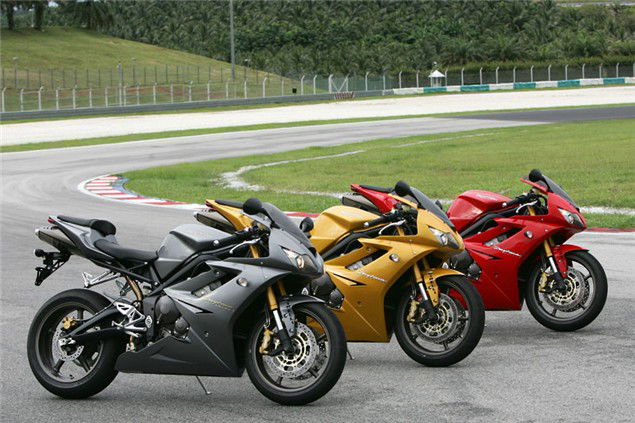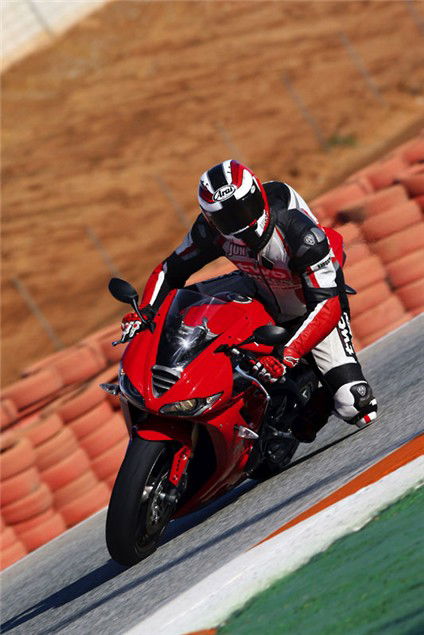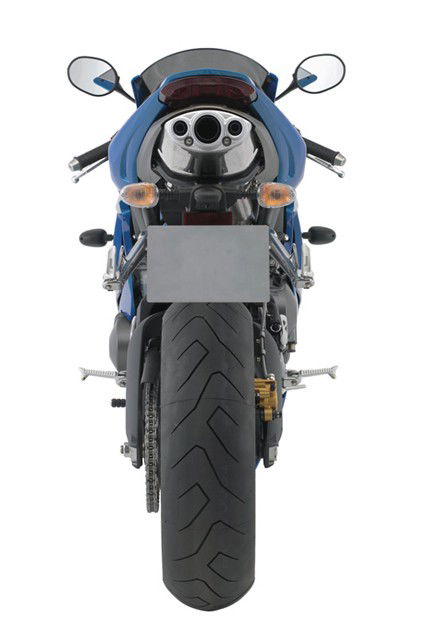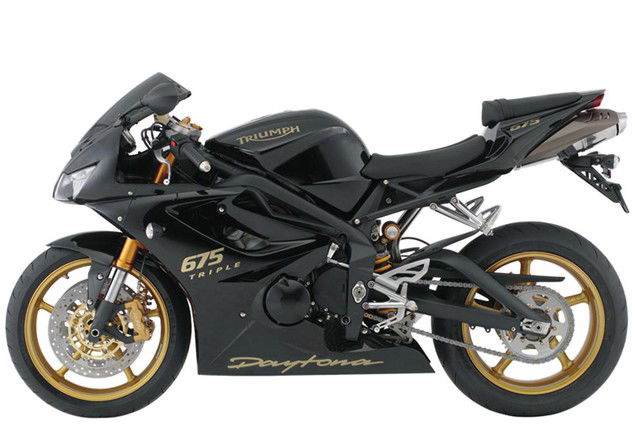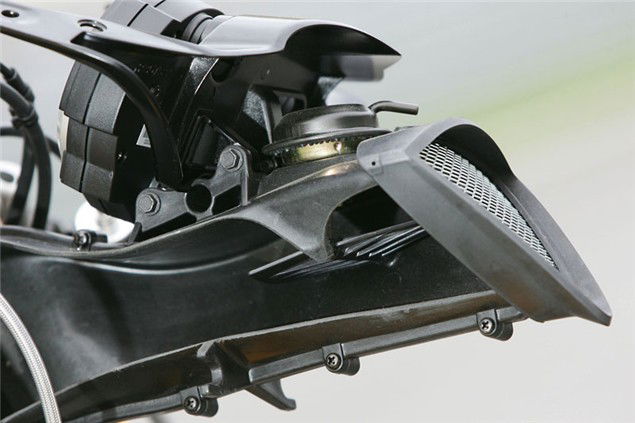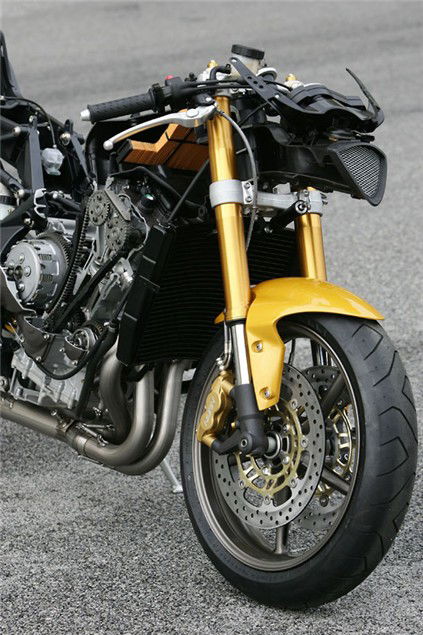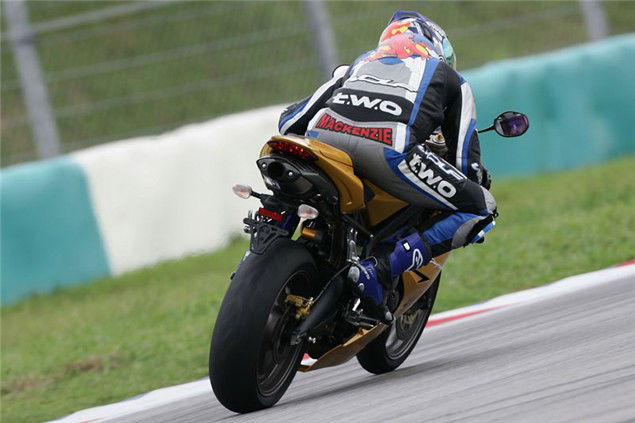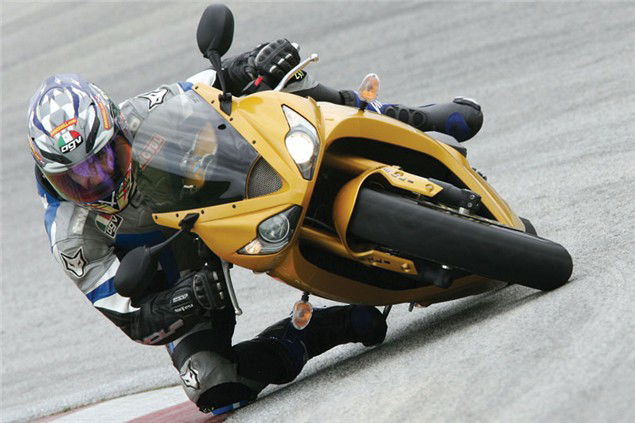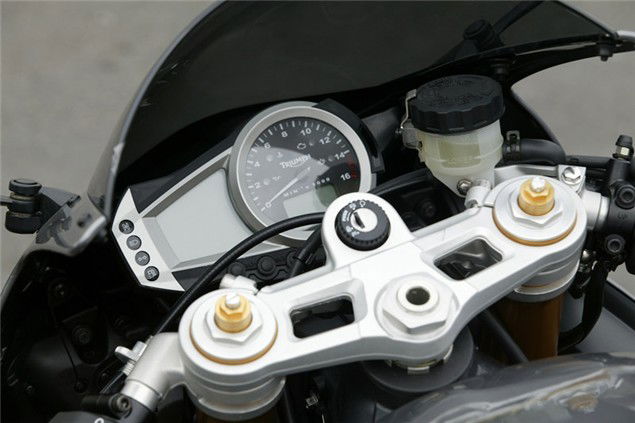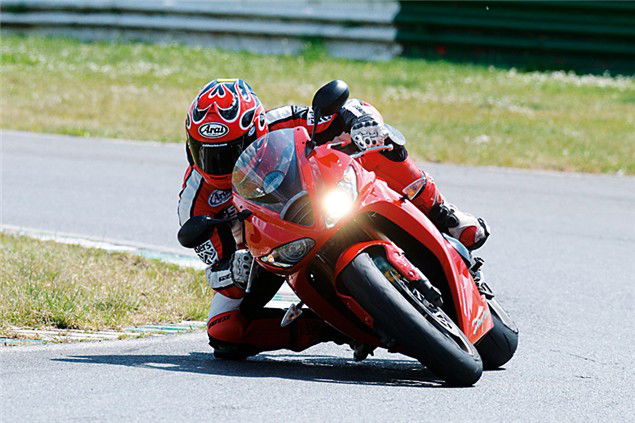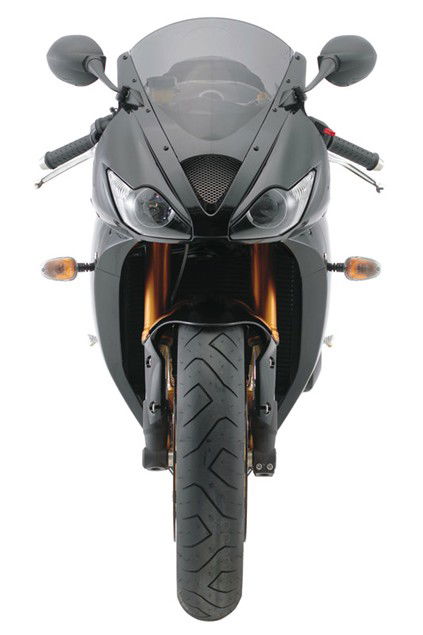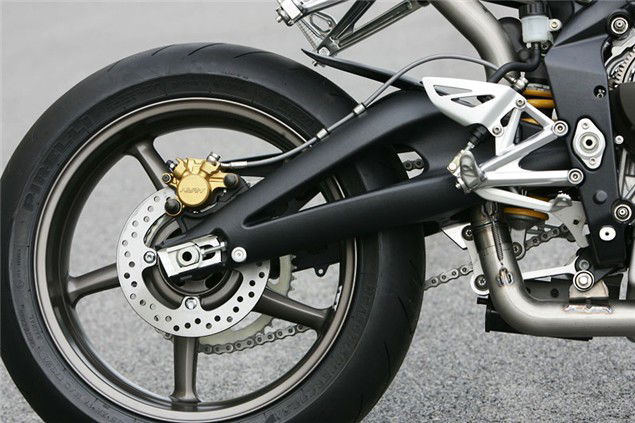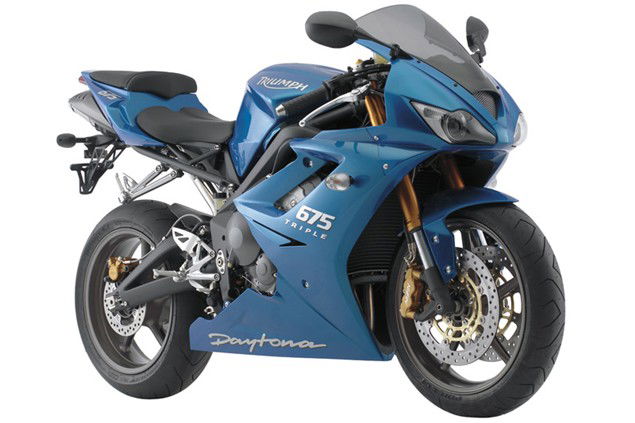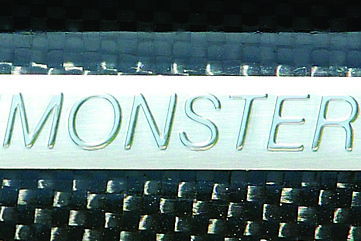Buyer Guide: Triumph Daytona 675
All the info, and barring a few moans most of it good, on Triumph’s middleweight missile from the people who know it best – owners


Click to read: Triumph Daytona 675 owners reviews, Triumph Daytona 675 specs and to see the Triumph Daytona 675 image gallery.
Taking on the Japanese in the ultra-competitive 600 sports class is a near impossible task. But Triumph did it and succeeded with the 675 Daytona. Okay, it’s not really a 600 but who cares if it’s got a few extra ccs. The point is in a class of samey, sanitised in-line fours the three cylinder Triumph’s got a distinctive and unique feature – that oversized engine. It’s packs much more torque than its rivals, sounds fit and snorty and it’s incredibly involving and satisfying to use.
On the road the 675cc triple makes a much better power plant than the revvy fours. If that sounds like we’re about to say it’s not so good on track – that’s simply not the case. The firm chassis is a bit over the top on rough roads but on smooth race tracks, it’s divine. The slim engine aids ground clearance, the front-end’s incredibly precise but not too flighty and it’s a bike which loves to corner hard.
Ultimately it’s slightly compromised on the road by the firmness of the suspension but that’s to be expected of a race rep and it’s an exciting, competitive, distinctive British success story. It even spawned the sales success story of 2008, the Street Triple – basically a stripped down budget spec Daytona with higher bars (read a review here or review the Street Triple yourself).
When the bike was new one magazine destroyed an engine and there were rumours of further similar problems. As it turns out (to the extent of this survey at least) the engine is mostly reliable albeit with one notable exception.
A handful of owners had problems with a rough misfiring engine. But even that hasn’t put them off. There’s an underlying theme throughout all the reader reports suggesting this is a bike that gets deep enough under a rider’s skin for it to be forgiven any little niggles. And that says a lot about Triumphs and the 675 in particular.
Triumph Daytona 675 Specifications
2006 Triumph Daytona 675 Specs
Engine l/c, 12v, injected, in-line triple, 675cc Power 123bhp @ 12,500rpm Torque 53ftlb @ 11,750rpm Dry weight 165kg Seat height 825mm Fuel capacity 17 litres Top speed 160mph
2009 Triumph Daytona 675 Specs
Engine l/c, 12v, injected, in-line triple, 675cc Power 126bhp @ 12,600rpm Torque 53ftlb @ 11,750rpm
Dry weight 162kg Seat height 825mm Fuel capacity 17 litres Top speed 160mph

The nuts & bolts
Reliability
Overall very good. 72% of owners had no problems at all while 14% suffered one minor problem and another 14% had a few problems. None had loads. That’s one of the best bikes we’ve surveyed but you’d expect a good score as they’re fairly new machines and most are still main dealer serviced and under warranty. So what does go wrong? The most common problem is regulator/rectifier failure with 10% of the bikes in the survey having had failures and replacements. Some owners say it’s been repositioned on the 2009 model but Triumph say that’s not correct. The other common problem is the exhaust valve causing grief in some form or another, often seizing. Again 10% of bikes in the survey had this problem at some stage. Otherwise there was just a smattering of unrelated, fairly minor issues and certainly nothing to worry about. A big thumbs up for reliability of the 675.
But that’s not to suggest an abused bike won’t have wear issues. Check the oil level and listen to the engine running, cold from start-up and hot after a good thrash, for any untoward noises. Battery life can be short too and we’ve heard of a couple of issues with the gear indicator so make sure that’s working 100% as well. A small number of early bikes had issues with the wiring loom and clocks, often because water had got into them.
We asked owners what they’d check for if buying a used 675. The most popular answer was crash damage. Also mentioned were gearbox action – none are super slick and some are worse than others, a tapping noise from the engine could just be the camchain (an improved tensioner was fitted to 2009 onwards bikes) or could be a sign of a major problem, and finally oil level – some bikes do burn a little and if the level’s allowed to run low that can be catastrophic. It’s worth making sure the exhaust valve is fully functioning too.
Finish
77% of owners are happy with the finish. Those that aren’t only seem to have minor grumbles. Chris Philpott says: “Triumph Jet Black paint abrades and gets swirls just by looking at it, so it seems. That’s what happened on my 675 and my Speed Triple.” Engine cases can corrode if not cared for and the black frame and swingarm can mark easily, especially if cleaned with powerful solvents. There’s the usual mention of fastener quality but less than most models. All round it’s a well finished bike.
Dealers and culture
It’s a bike with a small but keen following. There’s an excellent dedicated user forum Triumph675.net and it’s worth checking out TriumphTorque.com if you’re keen to get involved in meets, ride outs and general social stuff in the UK. Dealers are reasonably well regarded in the main but prices of parts and servicing are considered quite high.
Owner Case Study: “...quite a louda ticking noise from the left..”
Liam Fromyhr’s had his 2009 bike for less than a year but has already covered 13,000 miles on it
“First, I had a number of small issues with the exhaust valve motor and actuator cables after some minor stutters in the engine. Eventually both the cables and servo motor were replaced. Second, there was an intermittent major stutter in the engine several times which resulted in a loss of power, no throttle control and a sort of locking up/spluttering. Then when it came good again there was a surge in power which nearly made me crash once. I took it in to my Triumph dealer and a test showed it was intermittently dropping a cylinder. They took the engine apart a couple of times but weren’t able to resolve the issue. It hasn’t been too bad since then, but the bike feels down on power a bit now. The engine warning light comes on too.
“Also, there is quite a loud ticking noise also from the left hand side of the engine at all revs, and I’ve been told it’s not right by the Triumph mechanics. Valve clearances have been checked and all good, so I don’t know what it could be. Doesn’t seem to impact anything, just sounds rough and especially on starting. Despite this I still enjoy it immensely.”
Running costs and consumables
Servicing is due every 6,000 miles/one year after the initial running in period. They alternate minor/major with fuel hoses to be replaced every 24,000 miles/four years too. The minor service isn’t too involved but includes checking the spark plugs and balancing throttle bodies. Average price paid in our survey was £277. The major service is more involved, including checking the valve clearances and lubricating the head bearings so it costs more. Average price in our survey was £443. As always independent outfits are cheaper than main dealers – but most won’t have the diagnostic equipment or even the correct service schedule unless you find one with specialist Triumph knowledge. Just over a quarter of owners do all their own servicing. It’s not too difficult but valve clearances are best left to a pro unless you’re fairly experienced.
Fuel consumption’s typical for a sports bike – average is 41mpg, you can get 50+ on a long run if you’re fairly gentle with the throttle and it’ll drop below 25 if you give it plenty of stick on a race track.
The most popular tyres by some margin are Pirelli Diablo Supercorsas with 27% of owners saying they’re the best choice. They’re original equipment on the bike and quite a few riders are so impressed by them they haven’t tried anything else. They’re an aggressive sporty/track tyre and while dry performance is hard to criticise, Barry LeCavalier quite rightly points out they’re not the best in the rain. The second most popular tyres are Michelin Pilot Power. These are similar but a little more road oriented and the 2CT dual compound should last a few more miles too.
Conti Sport Attacks (a good budget option), Metzeler Sportec M3 (a good fast road/occasional track day tyre) and Pirelli Diablo Corsa IIIs (another slightly more road-biased tyre with different compounds for longer life or better grip) all share third spot in our survey. Average tyre life is 6000 miles front and 4500 rear.
Be aware it’s a high insurance group. Norwich Union 16 puts it one or two above 600cc rivals and that can make a big difference at renewal time. Even Triumph’s own Sprint ST and Daytona 955i are cheaper to cover.
Mods
As always there are loads but here are a few choice tweaks. The throttle tube from a Sprint 1050 reduces slop and increases response according to several owners. A different seat makes the bike much more comfy. Triumph’s own gel one is okay, Sargent’s is better. HID lights are popular as the originals are weedy. Ditto higher screens.
Your Reviews
The Daytona 675 features within the top 10 ranked bikes by you - and we're still looking for more reviews, opinions and impressions of Triumph's supersport triple. Head over to the Triumph Daytona 675 review section to log your thoughts.
Owner Case Study: “...suspension best investment I made...”
Jeff Henderson’s got one for the road and another for the track. So Jeff Henderson is a very lucky chap
“I bought my first Daytona 675 in 2006. I’d been considering a Sprint ST but having decided happiness was not around the next corner, it was “in” the corner, I went for the more aggressive bike. I liked the road handling so much I started using it on race tracks too with replica bodywork. Throughout the summer of 2007, the bike served double duty as a track bike and a street bike. I realized I was getting pretty serious about riding at the race track and changing the bike between track and street mode was taking two to three hours of my time. I finally found a low mileage, cosmetically damaged bike that I turned into a full-on track bike.
“I removed all the unwanted road stuff, put some Ohlins suspension in and immediately shaved 3 seconds off my best time from the previous season. The new suspension was the best investment I could have made in the bike. I was also running slicks for the very first time, which didn’t hurt either...
“If I were to buy another bike right now it’d be a BMW R1200G/S or a KTM 990 Adventure for the luggage, although I’d most likely keep a 675 as a track bike.”
